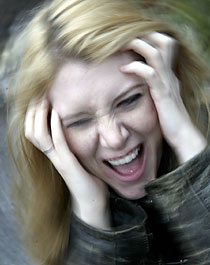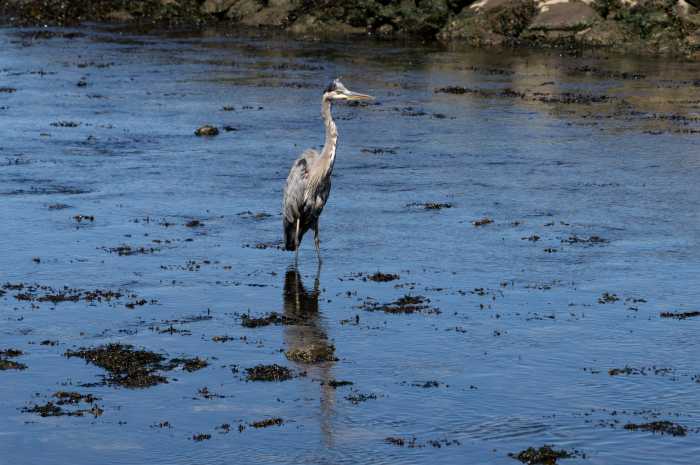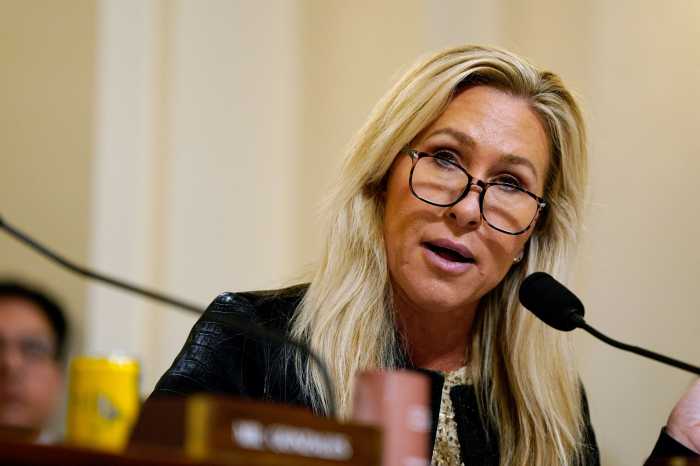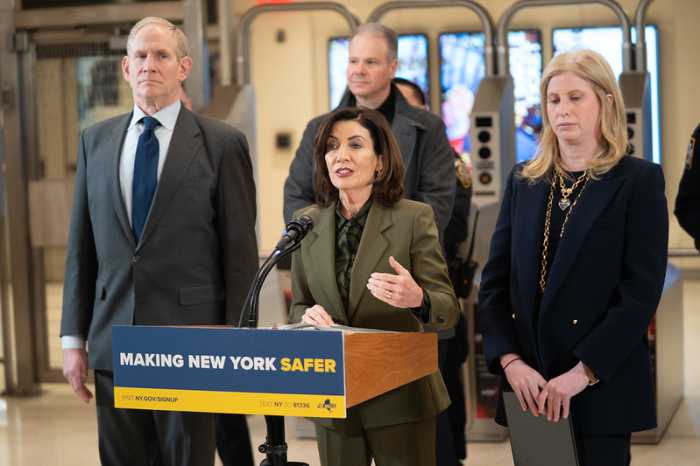Will you be ready when the Apocalypse comes?
For one Park Sloper, an appreciation of "useless information"
has bred a first book brimming with tips to help save humanity.
While some might assume that the author of "Field Guide
to the Apocalypse: Movie Survival Skills for the End of the World"
was a bit of a glass-half-empty sort, the scribe disagrees.
"It’s a survival guide, not a death guide," Meghann
Marco, 25, told GO Brooklyn this week. "I wrote the handbook
because I want people to LIVE." But she did admit that she
got the idea for her book while reading a military training manual
– for fun – on Christmas Eve.
Marco will share the knowledge she’s gleaned while researching
her field guide at a reading at Manhattan’s Half King on Dec.
5.
"Field Guide" is a clever, creative spoof of several
literary genres – travel guides, self-help books, survival manuals,
textbooks – that feeds off the cliches in science-fiction, horror
and blockbuster movies.
"I’m not really a science-fiction nerd," said the author,
whose family cat was named Gizmo, after a character in Joe Dante’s
1984 film "Gremlins."
"But I did see where there were patterns in the films and
stuff that was dumb, and I felt that I knew enough about them
that I could knowledgeably poke fun at them."
When considering the end of the world as we know it, the author
imagines everything a would-be doomsday survivor might need:
from trendy-yet-utilitarian fashion must-haves to a "cityspeak"
phrasebook to help navigate the advanced technological dystopia.
All of this is packaged with cyber-punk illustrations by Dominic
Bugatto.
"I chose him, because I really liked the comic book quality
of his work," said Marco, who graduated with a degree in
art history from Chicago’s DePaul University. "The only
thing I cared about was that we had the correct architecture
in all of the different types of apocalypses."
The sheer number of disasters in the book – from the likely,
such as nuclear war, a viral pandemic, or climate change, to
the unlikely, such as supervolcanos, meteor strikes, gamma ray
bursts, a Biblical Apocalypse, massive coordinated animal attacks,
or a robot revolution – can’t help but be depressing, but
Marco lightens the mood with her lighthearted tone.
In her "Post-apocalyptic Guide to Self-defense," she
encourages the reader to think outside the box: "This [signature
weapon] list is just to get you started. Be yourself! Be creative!
If you want to beat people up with a horseshoe on a rope, go
right ahead."
On surviving a massive, coordinated animal attack – a much-mined
topic for movies – she writes, "If our pets decide to overthrow
us, we’re pretty much doomed. Dogs and cats have access to the
White House, and they are trusted implicitly. They’re leading
blind people around, for Pete’s sake."
Marco admitted that she does have her critics.
"I’ve been accused of being too ’Bladerunner’-heavy at the
end of the book," she said, referring to her many references
to Ridley Scott’s 1982 cult-classic starring Harrison Ford as
Deckard, whose job it is to hunt down human replicants.
Yet when she makes movie references, Marco doesn’t always make
them explicit, in the hopes that readers will keep her soft-cover
handbook on the shelf, revisiting it over and over again and
enjoying jokes they didn’t get the first time – like an
episode of "Mystery Science Theater."
"I put in footnotes to cram in as much stuff to laugh at
as possible," said Marco. "I wanted it to have substance
and be worth reading more than once."
Among the fun-facts and how-tos she included are instructions
for determining if your food is made from people, how to make
antiserum from a human, warnings against eating a polar bear’s
liver and the importance of venting your snow house.
Saving Brooklynites
But the field guide’s not all about the comedy for Marco, who’s
an advocate for energy conservation. She hopes her book’s levity
will provide a bit of the sugar to help the medicine go down
– the medicine being the truly likely scenarios. Marco even feels
guilty about the scenarios she didn’t include.
"I knew about potential for trouble in New Orleans, and
I chose to leave that out of the book and then of course when
trouble happened there, it was very awkward for me … Should
I have mentioned it in the book – would it have helped?"
However, the author did share tips with GO Brooklyn to help our
readers survive an apocalyptic event.
"There’s not a lot of fresh water around here that’s potable,"
observed Marco. "I would consider stocking up on fresh water
but also learning about purifying water.
"Also I would think about [how to] evacuate Brooklyn. There’s
a chapter in the book where I calculate how much rotting flesh
would be in an urban area: ’Let’s say there are three million
people in your city. If the average person weighs 150 pounds,
that’s 450 million pounds of rotting flesh just within the city
limits alone. Not counting the suburbs. That will be one hell
of a stench.
"[So Brooklynites] will need a gas mask and need to get
out of town. But everyone else will be wanting to get out of
Brooklyn, too. A boat would be good."
Marco also recommended the Williamsburgh Savings Bank Building
as a handy fortress for a neo-medieval warlord, thanks to its
easily defensible height and vaults to hide valuable items like
penicillin, batteries and tampons. Of course, Marco re-capped,
setting up your warlord fortress is only recommended after the
stench of rotting flesh has passed.
Weird science
"If I had a higher moral goal [in writing the book], what
I wanted to do was cut through the spin that I was seeing on
CNN," explained Marco. "They say, let’s have both sides
of the story, and a lot of times, there aren’t both sides of
a story. I’m trying to portray what we know – the science
behind our impending doom – and try to explain it in a way people
would find entertaining to read and maybe learn something. Really,
I just don’t think we’re learning anything on the news."
As an example, Marco pointed out her chapter on mine shaft social
dynamics, which was based in part on a recently published research
paper on the topic of how architectural depth helps people live
in smaller, confined spaces for longer periods of time.
"I used that paper as a basis for a chapter that’s funny
and makes jokes about ’The Shining,’" she said.
But for the most part, Marco’s "Field Guide to the Apocalypse"
is about explaining the science behind the science fiction.
"[I show the reader] here’s what we know and here are the
theories, so you can read about it and learn and evaluate and
make your own opinion," she said.
Although "Field Guide to the Apocalypse" did deviate
from the norm of first books by being anything other than an
agonized, coming-of-age story, Marco admitted that it’s likely
that her sophomore effort will in fact be about her childhood
in Elgin, Illinois, named the "most typical town" by
Money magazine in 1997, when the author was in high school.
"George Bush came and talked about how typical we were.
That pissed me off," she said. "The only famous people
from Elgin are a guy from ’Babylon 5’ and a [Playboy] Playmate.
[The new book] is less of a coming-of-age story and more about
me being horrified at my circumstances in high school. It’s me
saying, ’Can’t you see being typical isn’t good?’ "
Author Meghann Marco, will read from
her new book, "Field Guide to the Apocalypse: Movie Survival
Skills for the End of the World" (Simon Spotlight Entertainment,
$12.95), at The Half King (505 West 23rd St. at 10th Avenue in
Manhattan) on Dec. 5 at 7 pm. This event is free. For more information,
visit the Web site at www.thehalfking.com
or call (212) 462-4300.

























